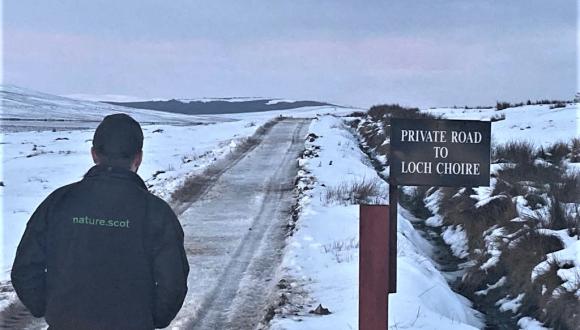Deer management methods
Deer management in Scotland is undertaken using the two principal methods of culling and fencing.
Deer stalking and culling
Stalking is the act of silently tracking prey – in this case, deer – without the animal being aware of your presence, to kill it humanely.
Stalking became a profession in Scotland in the 19th century. Landowners would employ local people to manage deer populations for the benefit of sporting interests. Deer populations were lower than they are now and stocks were allowed to increase to support lucrative sporting activities. Wealthy people would travel great distances to hunt deer for leisure.
Today, stalkers are employed for much the same purpose, though a crucial part of the role now is to identify unhealthy stock. Deer suffering from disease, malnourishment and injury are stalked before being humanely shot. The aim is to help maintain a healthy population and ensure that numbers meet sporting needs, in a way that is in balance with the natural environment.
Stalkers often work alone when culling deer as part of deer management.
Team or collaborative culling
When stalkers work in groups to cull deer more efficiently and effectively, this is known as ‘team culling’.
Team culling is beneficial when deer densities are high and/or deer move regularly over a large area. With team culling, stalkers employed on different landholdings can join together to share resources and the task of culling.
View guidance on team culling on our Best Practice Guides website.
Deer fencing
Deer fencing has been – and continues to be – used in Scotland as a tool to manage deer densities and movement.
Fencing can:
- allow different land uses to co-exist – either within a landholding or between landholdings
- protect the safety of the public
- enable changes to habitat, particularly woodland, within a relatively short time
But building a deer fence can also have unintended impacts on public safety and other interests such as deer welfare, biodiversity, landscape, cultural heritage and access.
When thinking of using fencing, you must:
- evaluate the option to control deer
- ensure that its design will minimise disruption to deer welfare, public safety, biodiversity, landscape, cultural heritage and access
- use it only as part of a wider programme of deer management
- plan not to leave it up for any longer than is necessary
- consider any impacts on the wider deer range – particularly nearby properties and local communities
- be aware that any deer that depend on the fenced-off area must be culled
- identify and minimise any negative impacts – approval of and financial support for fencing will depend on this
View guidance on fencing on our Best Practice Guides website.
Land managers can also use the guidance below to help decide upon the best deer management option for a landholding.
Read the Joint Agency Statement and Guidance on Deer Fencing






